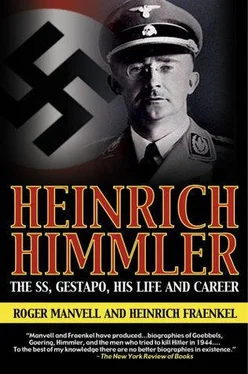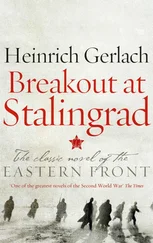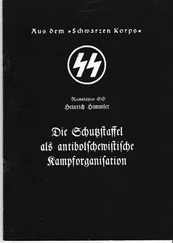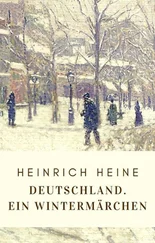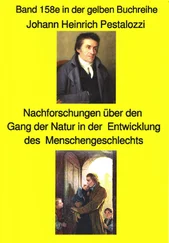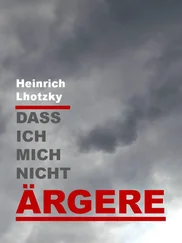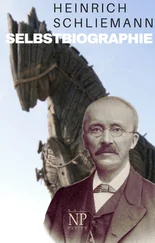‘For us the end of this war will mean an open road to the East, the creation of the Germanic Reich in this way or that… the fetching home of 30 million human beings of our blood, so that still during our lifetime we shall become a people of 120 million Germanic souls. That means that we shall be the single decisive power in Europe. We shall expand the borders of our German race 500 kilometres further out to the East.’
The number of children up to the age of twelve who were removed in this way will never be known. Though most came from Poland, there were cases of adopted children from Yugoslavia, Czechoslovakia and Russia. This wholesale Germanic adoption was limited by the scale of the organization that could be set up in wartime to deal with it, but an affidavit sworn after the war by Dr Hans Hilmar Staudte, a lawyer attached to the Lebensborn movement, claimed that between two and three hundred children were adopted for Germanization in the Warthegau administrative district of Poland. After testing they were placed with German foster parents whose name they were given, their own first names being kept as far as possible in their German form. The children, of course, were taught to speak German, and in effect became Germans. The problem of tracing individual cases still continues to this day in the International Tracing Centre at Arolsen.
Early in 1943 Himmler’s fancy was taken by two blond and blue-eyed Russian boys he saw in Minsk. These children were in effect adopted for a while by Himmler and his aides: after having been cleaned and schooled a little, they were sent by air to join Himmler on his train. They travelled for a while with him and there was much S.S. correspondence over the loss of one of their overcoats in Munich. Then they were placed in a school to be trained in the proper ways of the Reich.
The national reaction to Lebensborn was often critical. Because the homes were full of unmarried mothers many people thought they were brothels set up for the S.S. The Church in particular opposed the homes. In a speech given to an intimate circle of high officials much later in the war, during May 1944, Himmler spoke informally about the Lebensborn movement and the attacks that had been made upon it, and on himself for advising his S.S. men to procreate:
‘…At first these Lebensborn homes, like every new idea, became the object of scandalmongers by the score. They called them breeding-grounds, human stud-farms and so on. In fact, in these homes we merely look after mothers and the children, some of them legitimate, some not. I would say the ratio is about fifty-fifty, more likely sixty-forty in favour of the legitimately born babies.
‘In these homes every woman is addressed as Frau Marta, or Frau Elisabeth, or whatever her name happens to be. No one bothers whether their babies are legitimate or illegitimate. We look after mother and child, protect them, help them in their problems. There is only one thing unforgivable in these homes: if a mother fails to care for her child as a mother should.
‘Towards the end of 1939, after the Polish campaign, as soon as we knew that the war would go on in the West — the British and French having turned down the Führer’s peace offer after the Polish campaign — I issued an order which at that time caused quite a controversy and got the scandalmongers going again with further loads of abuse, directed largely at me. That order of mine simply said: every S.S. man before going to the front should procreate a child.
‘It seemed to me a thoroughly simple and decent order, and by now, after many years of terrible losses sustained by the German people, those who failed to comprehend my order at the time will have come to see that it makes sense. After all, I gave these matters a great deal of careful thought. My consideration was simply this: it’s a law of nature that the most valuable blood is lost for the nation so long as it cannot be procreated. It stands to reason that the man who is racially the most valuable will be the bravest soldier, and the one most likely to be killed in action. A nation which, in the course of twenty-five years has lost millions of its best sons, simply cannot afford such a loss of its blood; hence if the nation is to survive, and if the sacrifice of its best blood is not to be wasted, something had to be done about it.’
At the time he was making this speech about the procreation in the S.S., Hedwig, Himmler’s recognized mistress, was in the last stages of pregnancy with her second child. She gave birth to a daughter, who was named Nanette Dorothea. Her son Helge had been born on 15 February 1942. 14
The establishment of this second family placed a strain on Himmler’s deliberately restricted income. Schellenberg throws some light on this situation. Himmler, during a period of truce with Bormann, with whom he was later to form a kind of tactical relationship, asked for a loan of 80,000 marks from Party funds, ostensibly to build a house. Bormann granted him the loan, but at a very high rate of interest which Himmler could scarcely afford to pay out of his official salary. Schellenberg was astonished at this extraordinary arrangement which he found ‘incomprehensible’, and made his own observation on Himmler’s domestic problems:
‘Himmler’s first marriage had been unhappy, but for his daughter’s sake he had not sought divorce. He now lived with a woman who was not his wife, and they had two very nice children to whom he was completely devoted. He did what he could for these children within the limits of his own income, but although, after Hitler, Himmler had more real power than anyone else in the Third Reich, and through the control of many economic organisations could have had millions at his disposal, he found it difficult to provide for their needs.’ 15
When Schellenberg suggested a mortgage would be cheaper than the loan, Himmler rejected the suggestion with an ‘air of resignation’. It was, he said, ‘a completely private matter and he wanted to act with meticulous rectitude; in no circumstances did he want to discuss it with the Führer’. Meanwhile, he supported his family at Gmund, and although his wife knew of his liaison with Hedwig, he maintained formal good relations with her for the sake of their daughter Gudrun.
In November 1939, Himmler had assigned a special mission to Schellenberg, who abducted from Venlo, a town just across the Dutch frontier, two British Intelligence officers with whom he had been in contact, posing as an anti-Nazi German officer. The British agents, Captain S. Payne Best and Major R. H. Stevens, were accused of being involved in an attempt on Hitler’s life at Munich on 8 November. Though is is now widely assumed that the attempted assassination had been pre-arranged with Hitler’s approval, seven men lost their lives in the explosion that occurred after the Führer and other leaders had left. Hitler needed this excuse for propaganda to stir the German people against the Allies and to show what desperate enemies Himmler’s agents had to face. On 21 November Himmler announced that the British Intelligence service was behind the plot, and that prisoners had been taken.
The Venlo incident itself was to become one of the more entertaining spy stories of the war, both Schellenberg and Captain Payne Best giving their own detailed accounts of what happened. Both the British officers spent the next five years in concentration camps, and Schellenberg was promoted to S.S. Major-General for his efforts in having captured them. Schellenberg’s specialization in foreign espionage led to the practice of placing S.D. and Gestapo men as attaches in various German legations and embassies abroad, which enabled Himmler once more to encroach on Ribbentrop’s territory. In March 1940, as a follow-up to the Venlo incident, Schellenberg enabled Himmler to present a detailed report to Hitler establishing the close connection that existed between British and Dutch military Intelligence. Hitler was later to use this incident to help justify his attack on the Netherlands for violating their neutrality.
Читать дальше
